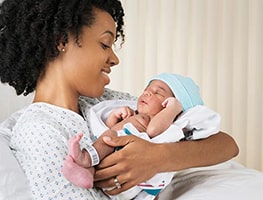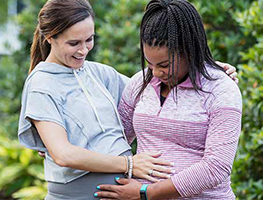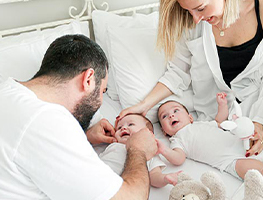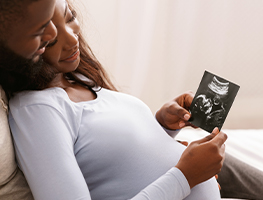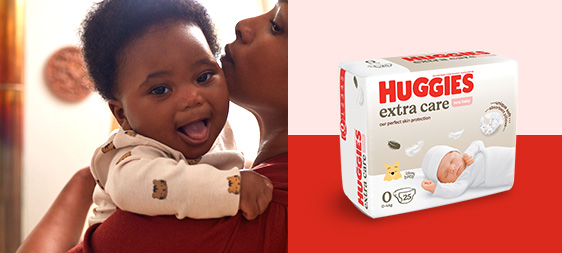The third and final stage of labour is measured from when the baby is born to when the placenta and membranes are delivered.
During third stage, the placenta detaches from the uterine wall and the muscles of the womb start to contract tightly around the blood vessels that supplied the placenta throughout the pregnancy to prevent you from losing excessive blood.
Following the baby’s birth, there is usually a break in the contractions for 15 to 20 minutes or so before the contractions resume, to deliver the placenta.
The contractions will go on for a while, but will usually be far less intense than before (although in second and subsequent births, they can be stronger).
For some women, the contractions in third stage are still strong enough that it helps to use labour breathing techniques to cope with the discomfort of these contractions.
Your caregiver may ask you to push a few times to deliver the placenta. Again, this pushing is far less intense than the delivery of the baby.
Third stage usually lasts 10 to 30 minutes, but with ‘active management’, common in many hospitals, it may be much shorter.
In active management, an injection of Syntocinon (or other synthetic oxytocin drug) is administered to the mother’s shoulder or buttock about a minute after the birth of the baby. The cord is clamped and cut a couple of minutes later, and ‘controlled cord traction’ (where the placenta is pulled away via the cord) is applied.
Proponents of active management argue that it minimises post-partum haemorrhage and other serious maternal illnesses. However, if your hospital or birth place does not practice ‘active management’ of the birth, you may find that third stage lasts a lot longer.
After 30 minutes you may be given a drug to encourage the delivery of the placenta; in a homebirth more time is often given. Breastfeeding the baby soon after birth can help deliver the placenta faster.
As with the whole birth process, the delivery of the placenta can hold strong emotional significance for some women; while others report it as a non-event.
When the placenta is delivered, your caregiver will examine it closely to make sure that it has been delivered whole and no part of the placenta has been left behind (retained placenta can cause infection and haemorrhage, so it’s important to diagnose this quickly).
They will also examine the umbilical cord and the membranes.
You may want to see the placenta that has been your baby’s support system for the past 9 months; or you may have no interest in it at all.
The birth placenta holds significant value in some cultures and for some people and it is not uncommon for people to bring their baby’s placenta home, bury it in the garden and plant a tree above it, because the placenta contains such nutritious elements.
Your caregiver will usually check on you at regular intervals over the first hour after the placenta has been delivered, and further for the next 24 hours and then again over the next 6 weeks, to make sure that your womb is contracting back into its original state.
Your caregiver will also examine your perineum and stitch any tears if needed, often using a local anaesthetic.
Most parents focus their attention on the baby at this stage – so third stage is often a non-event; however it may be quite significant if there was a lot of birth trauma.
Sometimes there are some rapid decisions that you may have to make – for example, whether you want your baby to receive injections for vitamin K or Hep B. It helps to be quite clear beforehand about what decisions you have made and perhaps prepare your answers in writing. Or make sure your birth partner / husband / support person knows the answers to these questions if you are too “out of it” to make those decisions.
If you have made arrangements beforehand to donate or preserve your baby’s cord blood, the midwife from the cord blood bank (or your own carer, following previous instructions) will act quickly to drain the blood from the cord and transfer it to the appropriate storage facility.








